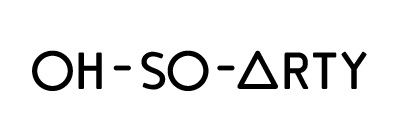November is again busy month for Lisbon. New exhibition openings and also some bigger projects to be developed. In the field of new media – which is not very present in Lisbon normally - this month I would recommend visiting The New Art Fest 2017 and open day of Temp Studio residency project in an amazing Anjos 70.
I.
Exhibition: ONE DAY IT WILL ALL MAKE SENSE
Artists: Hugo Cantegrel
Venue: FOCO
Dates: Until October 28th, 2011
New exhibition in FOCO, young gallery, run by French gallerist – Ben Gonthier, is all about autobiographical creation. Lisbon based French artists – Cantegrel – has changed the space in very theatrical manner. Ephemeral and personal nature of artworks is visible in colours and composition of installations. Hugo’s work should be read in a whole, as a story, which occupies the space, not as parts. It makes me think about my family’s photo books of old times and cheerful moments of childhood. Although it’s small venue, it’s definitely worth visiting this month.
II.
Exhibition: Follow You; opening of new project space
Artists: Gina Folly
Venue: Belo Campo
Dates: Until January 1, 2018
In November, we will witness an opening of a new artist run space in Lisbon. It’s called Belo Campo and will function in framework of commercial gallery, but it’s main structure is not- for-profit. Project will serve as a laboratory to artistic experiment with space, time and contemporary culture in general. This is what they say about the project: ‘Belo Campo is an epiphyte space for contemporary cultures initiated and run by Adrien Missika and hosted by Galeria Francisco Fino. It is located in the basement of the gallery in a former wine cellar.’ On the November 10th there is an official opening on the occasion of new, solo show by Adrien Missika for Francicso Fino Gallery.
III.
Exhibition: Gender in art. Body, sexuality, identity, resistance
Artists: various artists
Venue: Museu Nacional de Arte Contemporânea do Chiado
Dates: March 11, 2018
New thematic exhibition in MNAC Chiado museum is composed by excellent fifteen Portuguese artists, who all talk about Gender issues in daily constructions. It’s an attempt to reconstruct stereotypes about dimensions of Gender and to bring into an institution a debate about them. Museum itself is more know of small collection of contemporary Portuguese art and temporary, solo projects, so in this case, exhibition Gender in art. Body, sexuality, identity, resistance is an exception, worth seeing.




















